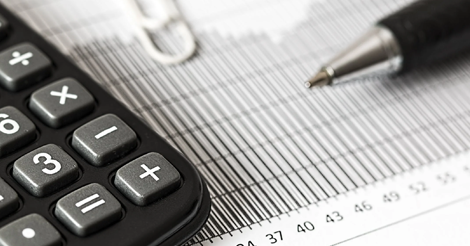Accounting reports are a critical component of any enterprise resource planning (ERP) system, as they provide valuable financial information about your company's financial status, transactions, and operations. These reports are used to track income and expenses, manage cash flow, monitor profitability, and make informed business decisions. To effectively run a business, an ERP system needs to have a comprehensive suite of accounting reports, including balance sheets, income statements, cash flow statements, and trial balances, among others. Below we take a look at some of the specific accounting reports every ERP system needs.
Customer or Vendor Aging Report
A Customer or Vendor Aging Report provides information about the outstanding invoices or payment obligations of your company’s customers or suppliers. This report can be reviewed in summary or detail, current or retroactive and is typically divided into columns or categories such as current, 31-60 days, 61-90 days, 91-120 days or more. The number of days indicates how much time has passed since an invoice was issued or payment was due. This report allows you to track the timing of expected payments and allows you to monitor the risk of bad debt or delayed payments from customers or suppliers. This helps you manage your overall cash flow and make informed credit decisions.
Vendor Aging Report
A Vendor Aging Report outlines the amount of money your business owes to your suppliers and vendors and the length of time those amounts have been outstanding. The report categorizes the accounts payable by the number of days that have passed since the invoice due date, commonly using 30-day increments such as “30-60 days overdue”. This report helps your team monitor your accounts payable and cash flow.
Vendor Payment Requirements Report
A Vendor Payment Requirements Report is an accounting ERP report that provides a quick snapshot of amounts owed to suppliers or vendors and the due dates for those payments. This report helps you manage accounts payable to ensure that all vendor payments are made on time and gives you a good indication of your cash flow to help you plan for other financial decisions accordingly. This report typically shows information about the vendor, and then outstanding payment amounts, due dates and days overdue.
Deposit History Report
A Deposit History Report provides a record of all the deposits made into a bank account over a specific time period. This report shows the date of each deposit, amount, source (such as check or cash), company name, currency and reference number. This report allows you to monitor the inflow of cash into a specific bank account and helps your business track your financial transactions. It can also be used to help reconcile bank statements, prepare financial statements and analyze your cash flow.
Financial Dashboards
One of the benefits of sophisticated ERP software compared to introductory accounting systems are Financial Dashboards and other reporting dashboards. Reporting dashboards provide you with a customized overview of ERP reports with the ability to drill down into any specific report for more information. Dashboards allow you to empower employees and managers to quickly view important information in real-time without having to open multiple screens. They also provide a visual representation of data, making it easier to identify and understand trends, patterns, opportunities and outliers. You can also customize dashboards to show only what information is relevant to you and your team – for example, Financial Dashboards for your accounting department and Operational Dashboards for your ops team.
Financial Statements – Income Statement and Balance Sheet
It’s important that your ERP system can help you produce financial statements quickly and easily with the ability to toggle between different periods and accounts to make comparisons. This allows you to quickly compare different information and perform a "what-if” analysis. The ability to view the General Ledger Trial Balance in summary or detail helps to make sure the numbers balance as they should. When it comes to comparing ERP reporting tools, dashboards and interactive drill-down capabilities are part of what separates the good from the bad.










